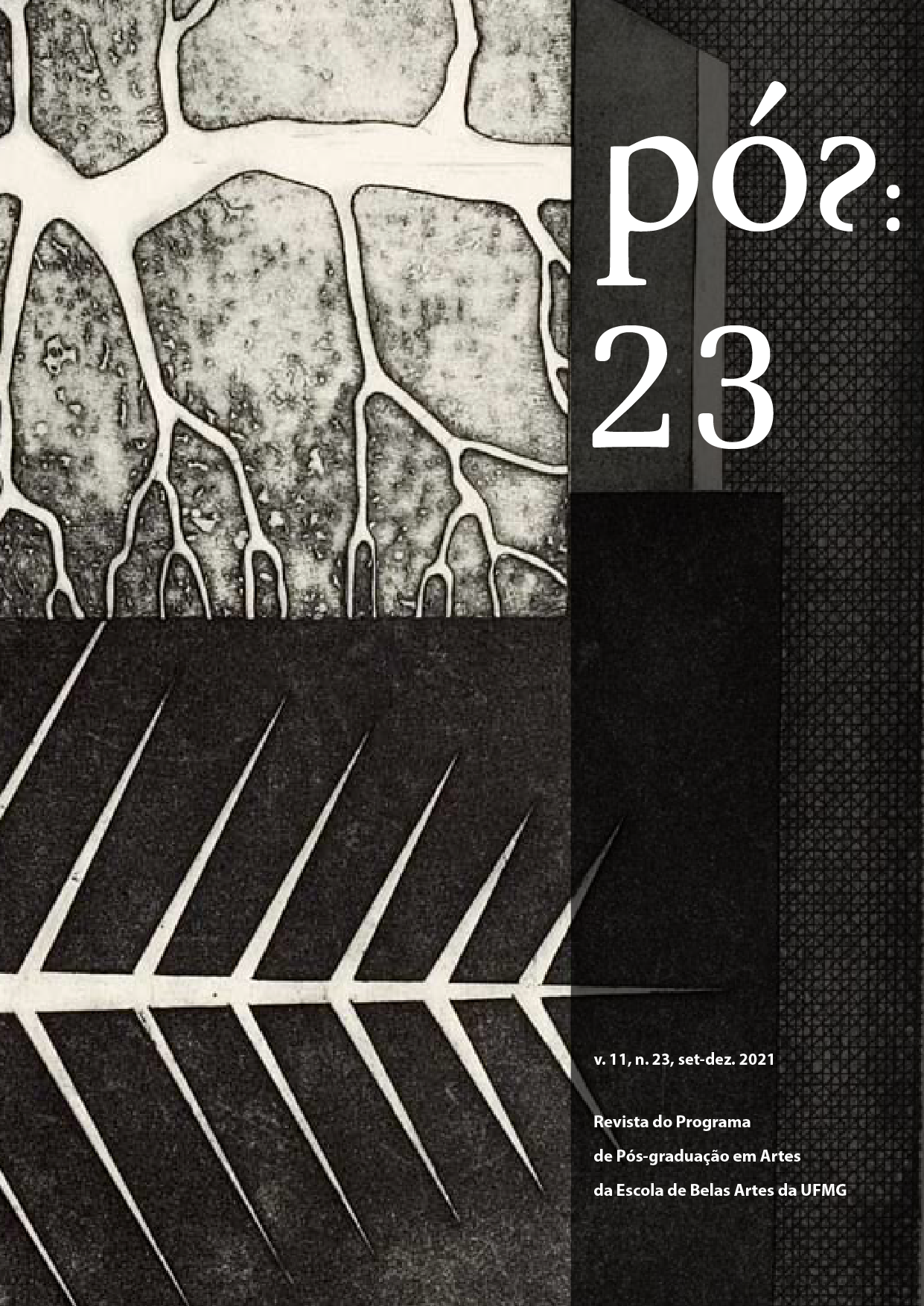Poética dos intervalos
animação 3D nas extremidades
DOI:
https://doi.org/10.35699/2237-5864.2021.32943Palavras-chave:
Animação 3D, Cinema, Extremidade, RealismoResumo
A imagem mercadológica da animação 3D atualiza e reforça contratos comunicacionais cinematográficos, a partir de suas capacidades de síntese hiper-realistas. O objetivo deste estudo é dar a ver procedimentos que se encontram a margem do fluxo produtivo principal, de modo a descontruir o ilusionismo das imagens técnicas e dar materialidade visual aos processos computacionais subjacentes. A abordagem das extremidades, desenvolvida por Christine Mello, é utilizada como vetor de leitura das obras, elencadas de modo a localizar suas zonas-limite em termos de tensionamentos artísticos, conferindo pluralidade ao campo estético e ampliação das possibilidades artísticas diante do diálogo maquínico.
Downloads
Referências
BAIO, Cesar. Máquinas de imagens: arte, tecnologia e pós-virtualidade. São Paulo: Annablume, 2015.
COUCHOT, Edmond. A tecnologia na arte: da fotografia à realidade virtual. Porto Alegre: Editora UFRS, 2003.
DUBOIS, Philippe. Cinema, vídeo, Godard. São Paulo: Cosac Naify, 2004.
ELSAESSER, Thomas. Cinema como arqueologia das mídias. São Paulo: Edições Sesc, 2018.
FEST Direção: Nikita Diakur. 2018. 1 vídeo (2:55 min.), son., color., digital. Disponível em: <https://www.youtube.com/watch?v=Q2VMWR8xlls>. Acesso em: 12 nov. 2021.
FLUSSER, Vilém. A filosofia da caixa preta. Rio de Janeiro: Relume-Dumará, 2002.
______. O universo das imagens técnicas: elogio da superficialidade. São Paulo: Annablume, 2008.
LAZZARATO, Maurizio. Trabalho imaterial: formas de vida e produção de subjetividade. Rio de Janeiro: DP&A, 200l.
MACHADO, Arlindo. Pré-cinemas e pós-cinemas. Campinas: Papirus, 1997
______. A arte do vídeo. São Paulo: Brasiliense, 1998.
______. A ilusão especular: uma teoria da fotografia. São Paulo: Gustavo Gili Brasil, 2015.
MANOVICH, Lev. The Aesthetics of Virtual Worlds.CTHEORY, West Holywood, Los Angeles, nov. 1995. Disponível em: <http://manovich.net/content/04-projects/016-the-aesthetics-of-virtual-worlds/13_article_1996.pdf>. Acesso em: 15 nov. 2018.
______. Image Future, 2006. Disponível em: <http://manovich.net/content/04-projects/048-image-future/45_article_2006.pdf>. Acesso em: 15 nov. 2018.
MELLO, Christine. Extremidades do vídeo. São Paulo: Editora Senac, 2008.
______ (org.). Extremidades: experimentos críticos 1. São Paulo: Estação das Letras e Cores, 2017
PLEASE, SAY SOMETHING. 2009. Direção: David Oreilly. 2009. 1 vídeo (10 min.), son., color., digital. Disponível em: <https://youtu.be/Q2YdJy0w66Y>. Acesso em: 16 nov. 2020.
PLAZA, Julio; TAVARES, Monica. Processos criativos com os meios eletrônicos: poéticas digitais. São Paulo: Hucitec, 1998
PORTUGAL, Demétrio. Outros fluxos cinematográficos e sua produção de imagens. In: BAMBOZZI, Lucas; PORTUGAL, Demétrio (org.). Cinema e seus outros: manifestaçõesexpandidas do audiovisual. São Paulo: Equador, 2019. p. 163-170.
ROLNIK, Suely. Esferas da insurreição: notas para uma vida não cafetinada. São Paulo: N-1Edições, 2018.
UGLY. Direção: Nikita Diakur. 2018. 1 vídeo (11 min.), son., color., digital. Disponível em: <https://www.youtube.com/watch?v=EgPb-LEb3KE>. Acesso em: 13 mar. 2021.
YOUNGBLOOD, Gene. Expanded Cinema. Massachusetts: E.P. Dutton, 1970.
Downloads
Publicado
Edição
Seção
Licença
Copyright (c) 2021 Carlos Eduardo Nogueira, Christine Mello

Este trabalho está licenciado sob uma licença Creative Commons Attribution-NonCommercial 4.0 International License.
Autores que publicam nesta revista concordam com os seguintes termos:
- Autores mantém os direitos autorais e concedem à revista o direito de primeira publicação, com o trabalho simultaneamente licenciado sob a Creative Commons Attribution-NonCommercial 4.0 International License que permite o compartilhamento do trabalho com reconhecimento da autoria e publicação inicial nesta revista.
- Autores têm autorização para assumir contratos adicionais separadamente, para distribuição não-exclusiva da versão do trabalho publicada nesta revista (ex.: publicar em repositório institucional ou como capítulo de livro), com reconhecimento de autoria e publicação inicial nesta revista.
- Autores têm permissão e são estimulados a publicar e distribuir seu trabalho online (ex.: em repositórios institucionais ou na sua página pessoal) a qualquer ponto antes ou durante o processo editorial, já que isso pode gerar alterações produtivas, bem como aumentar o impacto e a citação do trabalho publicado
- É responsabilidade dos autores a obtenção da permissão por escrito para usar em seus artigos materiais protegidos por lei de Direitos Autorais. A Revista PÓS não é responsável por quebras de direitos autorais feitas por seus colaboradores.












